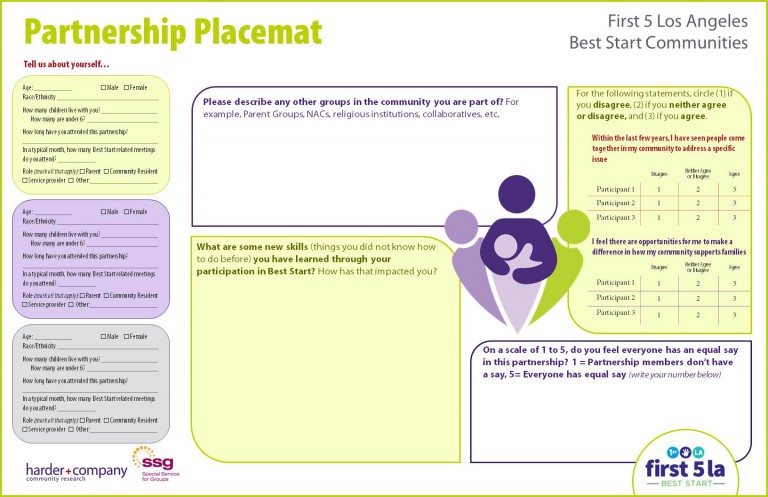
From the early days of the community development movement to the federal Promise Neighborhoods program, funders have long understood the importance of place in addressing the needs of vulnerable communities, including health disparities, poor education, and unemployment. Decades of experience continue to remind us of the fundamental importance of engaging communities in place-based initiatives that directly impact their lives. As Melody Barnes and Paul Schmidt argue in a recent Stanford Social Innovation Review article, “impatient, top-down efforts… will not produce lasting results. To achieve positive and enduring change, public and nonprofit leaders must create community engagement strategies that are as robust as the data-driven solutions they hope to pursue.” While this may sound straightforward, genuine community engagement requires time and patience, building trusting collaborative relationships through open communication, and supporting a community’s capacity to make data-informed decisions.
Supporting community engagement in the early stages of a place-based initiative was an important theme from the Art and Science of Place-based Evaluation convening that we participated in last fall, where we shared our work with First 5 LA. First 5 LA is a leading early childhood funder working collaboratively across Los Angeles County to ensure that every child enters kindergarten ready to succeed in school and life. Best Start is a place-based initiative of First 5 LA that builds supportive environments where children and families can thrive in 14 communities across the county. In 2014, First 5 LA launched a new framework and learning structures that allowed community members to develop their capacity and skills to use data to in identify goals and strategies that address the needs in their communities.
Harder+Company joined forces with our colleagues at Special Service for Groups (SSG) to conduct a developmental evaluation designed to help First 5 LA and the Best Start Communities identify key learnings and insights to inform and strengthen their work. Through this reflective and iterative process, we surfaced both challenges and strengths of community engagement efforts, and engaged community members in learning, planning, and decision-making. By engaging the community in learning and evaluation, we had the opportunity to use a mix of creative new approaches and tried-and-true methods. Some of the most effective approaches were:
- Creative tools to stimulate discussion. Rather than simply collecting “data” from communities using traditional (and often culturally inappropriate) methods, we looked for ways to engage people in peer learning. For example, community members used “data collection placemats” to ask each other key evaluative questions about their social networks and their collaborative experience as part of Best Start. The placemats were bright and colorful with easy to read instructions in both English and Spanish.

- Partners in data analysis. To leverage local wisdom and build the community’s capacity to use data, the evaluation team facilitated reflection sessions where data was shared back to community partnerships via infographic visualizations, gallery walks and world café discussions. This allowed community members to learn from the data, add their wisdom, and reflect on what the data means and how it mirrors with their own experiences.

- Build community capacity to collect and own the data. Over time, community residents have become increasingly interested in gathering data to learn more about their communities and address gaps in the existing data. In response, the evaluation team helped several communities create, collect and analyze their own survey data to inform their planning.
Collaborating with community members on data collection and interpretation is an important part of promoting genuine community engagement and capacity building. However, successful engagement goes beyond data sharing and reflection. Like many other funders, First 5 LA has learned about the importance of frequently and clearly communicating their goals, expectations and decision-making processes. Other key lessons include the need to factor more time for planning and capacity building, and staying open to hearing and responding to the community’s needs and aspirations. Our evaluation provided learnings at multiple levels of this complex initiative, identifying areas where engagement and capacity building was successful but also helping the organization reflect on their practices and refine their approach to community engagement.
